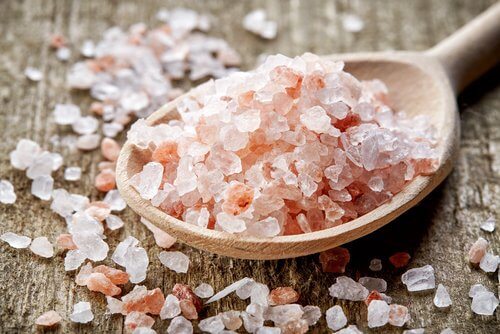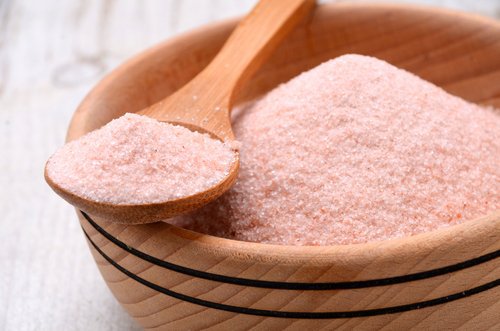Reduce Migraine Symptoms with Pink Himalaya Salt

Migraines are intense, aggravating, pulsing headaches. They can be accompanied by dizziness, blurred vision, inability to keep track of time, nausea, and vomiting. There are some strong drugs that are used to treat migraines. However, pink Himalayan salt is a natural alternative that can reduce migraine symptoms.
How can Pink Himalayan salt reduce migraine symptoms?

See also: 9 Signs of Low Serotonin Levels
Also, it strengthens our immune system, raises our energy levels, balances our pH levels, restores electrolytes, and much more.
Differences between table salt and pink Himalayan salt

Table salt is almost completely sodium chloride. Table salt can also come from places with contaminated water. Even though this salt is refined after being gathered from the sea, it can still be contaminated. If traces of contamination are left behind in the salt, it can be toxic for us.
How to use pink Himalayan salt to reduce migraine symptoms

To reduce migraine symptoms with this salt, all you have to do is make this simple drink. Besides relieving the pain, this drink will also boost your immune system and give you more energy.
Ingredients
- 2 teaspoons of pink Himalayan salt (9 g)
- The juice of 2 lemons
- 1 cup of water (200 ml)
Preparation
- Just mix all of the ingredients together. Then, drink the mixture. You can drink this every time you have a migraine.
Please note that people with hypertension shouldn’t use this natural remedy. You also should avoid it if you’re very nauseous. This drink could make you vomit. Also, it has some laxative effects.
This article may interest you: Seven Complications of Hypertension
Other uses for pink Himalayan salt

Besides helping relieve migraine pain, this salt has other health-related applications. Here are some of them:
1. Salt baths for skin, joint, and rheumatism problems
Salt baths with pink Himalayan salt should last between 5 and 20 minutes. They can help relieve skin, joint, and rheumatism problems.
- You should take the bath in a bathtub with lukewarm water.
- The amount of salt you use will depend on the size of your bathtub. The ideal ratio is 1% salt.
- For example, for a 30 gallon bathtub, you should use approximately one pound of salt.
After the bath, relax for an hour. Besides the health benefits of this bath, it’s also very relaxing and refreshing.
2. Beauty uses

Pink Himalayan salt is a component in many personal hygiene and beauty products. A topical application is another way we can use it to help our skin.
3. Respiratory treatment to open your nasal passages
We can also use this salt to relieve nasal congestion quickly and effectively.
What do we have to do?
- Add a tablespoon of pink Himalayan salt to boiling water.
- Put your head over the water container. Put a large towel over your head. Then, inhale the salt water vapors.
4. Rinses for your nose, throat, and eyes
To prepare the water for these rinses, dissolve a tablespoon of pink Himalayan salt in a liter of lukewarm distilled water. Then, make the rinses following these instructions:
- For your eyes, put the salt water in an eye dropper. Hold your eyes open with your fingers. Drop one or two drops of the lukewarm saline mixture in your eyes.
- You can use the same mixture for a nose and throat rinse.
Pink Himalayan salt is a remedy for many pains. The best part of it is that it’s cheap, easy to find, and can help reduce migraine symptoms.
Remember that this natural remedy should never be used as a substitute for a medical treatment. It should only be a supplement.
Many people have faith in the speed and efficacy of this treatment. However, if the pain persists, talk to your doctor.
All cited sources were thoroughly reviewed by our team to ensure their quality, reliability, currency, and validity. The bibliography of this article was considered reliable and of academic or scientific accuracy.
- Blitshteyn, S. (2016). Dietary Sodium Intake and Migraine: Is Salt the Answer? Headache. https://doi.org/10.1111/head.12869
- Sandu, I., Alexianu, M., Curcǎ, R. G., Weller, O., & Pascu, C. (2009). Halotherapy: From ethnoscience to scientific explanations. In Environmental Engineering and Management Journal.
This text is provided for informational purposes only and does not replace consultation with a professional. If in doubt, consult your specialist.








